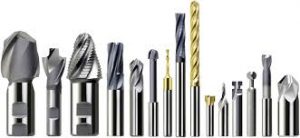
In the automotive and aerospace manufacturing, precision machining has become a trend, the workpiece surface finish requirements are constantly improved. Metal ceramic tool usage in these industries is grow with each passing day. In order to prolong the Cermet Tool life, the focus of attention focused on how to improve the toughness and wear resistance.
The fine structure of metal ceramic (solid solution cermet and high nitrogen) research and development progress has been made in.Gl3000 cermet grades can be used for turning and milling, the turning cutting performance and tool life is significantly higher than the traditional metal ceramic brands. Our company using fine grain TiCN powder and after alloy design optimization technology for preparation and microstructure of alloy, has excellent performance and stability. Help to improve the uniformity of fine grain microstructure of the higher nitrogen content, optimize the cutting performance.
In order to make the metal ceramic tool with good toughness and wear resistance, it is necessary to optimize the cutting edge of the surface and internal structure. Therefore, reducing the surface and cobalt nitride binder content can improve the hardness and wear resistance of the cutting edge. On the other hand, increasing the bond content below the surface of the internal structure can improve the toughness, thereby prolonging the tool life.
The alloy technology and sintering technology in the preparation of PVD ceramic metal coating, binder content can be optimized on the surface and internal surface, the formation of binder content is low, the internal structure of functionally gradient bond content is high.
Compared with the traditional metal ceramic tool, functionally gradient ceramic tool stability is significantly improved, the tool life is longer. But with hard alloy tools compared to existing metal ceramic tool toughness and thermal conductivity is still slightly inferior, so its use is limited to the intermittent cutting or thermal shock conditions.